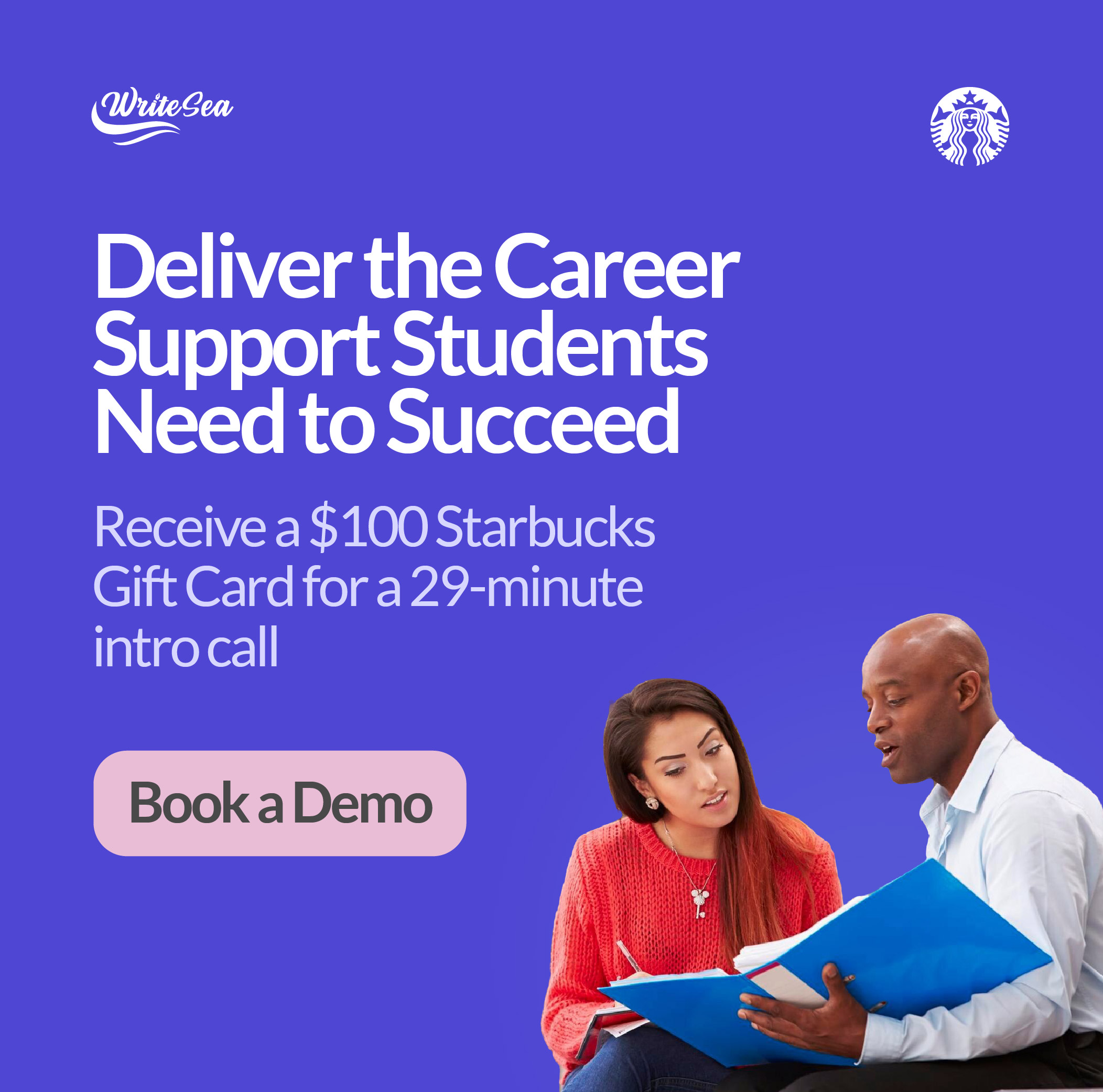NACE Journal, May 2020
For many graduates, walking across the stage and receiving their degree represents a culmination of their hard work, accrued knowledge, and skill development. However, when many of these graduates encounter potential employers, they have a difficult time articulating exactly what they learned and showing how this knowledge transfers to the workplace. In response, many universities are shifting their culture to embrace career competencies to improve students’ efficacy with regard to career readiness.
A competency is “the combination of observable and measurable knowledge, skills, abilities, and personal attributes that contribute to enhanced employee performance and ultimately result in organizational success.”1 Focusing on competencies rather than basic skills or “content knowledge” aligns better with employers’ needs.2 To be successful in building such a culture, universities must embrace a vision that places faculty in the driver’s seat. Ascan Koerner, professor of communication and associate dean of undergraduate studies in the College of Liberal Arts at the University of Minnesota, indicated the university community must consider career readiness “a shared responsibility that cannot be delegated to student and career services.”3
Administrators, however, face difficult challenges in onboarding faculty if they use a top-down approach that packages career readiness as a new program or initiative. Some faculty may object to the idea of having to center their courses around a career focus; others may be skeptical and fearful of an administrator’s ability to track course outcomes more closely; and still others may lack a current, comprehensive understanding about careers, workplace, work culture, and competencies. To overcome these hurdles, universities must let much of career readiness implementation be faculty-driven since the success of career readiness plays out in the classroom.
Career Readiness Development
Building a campus culture that focuses on career readiness must start with faculty input. Koerner emphasized that faculty must be “heavily involved in all stages, in particular, in the efforts to bring career readiness into the curricula and the classroom.”4 Inviting faculty and other stakeholders to participate in the developmental phases can foster buy-in, which is essential to success. The alternative to including faculty is failure since, according to Koerner, “student-focused initiatives, and really any activity by the college that is not supported by the faculty, rarely succeed regardless of how much support a college’s leadership and administration lend to it.”5
To some degree, the discussion about one’s competency is nothing new; however, moving the discussion onto a college campus, branding it, marketing it, and encouraging both faculty and students to engage in the effort is relatively new. Consequently, a primary challenge facing a career readiness task force is deciding “how to move the conversation from subjective competency measures to objective competency measures.”6 Working together, career readiness task force members can shape an organization’s mission that includes not only a knowledge focus but also the application of that knowledge pre- and post-graduation. Task force members can also address key questions that stimulate fruitful conversations:
- What is the institution doing right with regard to career readiness and student engagement?
- How does the organization fall short?
- What skills and competencies are essential for all graduates?
- What kinds of results as far as employment or graduate school admission does the institution see or want to see with regard to student success?7
Asking these broad questions early on in the process can move organizations toward constructing a common language that takes different stakeholders’ perspectives into consideration.8 Finding a common language to describe, measure, and evaluate competencies early on will open up the process to discussion and reflection as well. In an article regarding competencies and employability skills, the author recommended that “eliminating subjectivity should be at the forefront of discussions involving the development of new employability frameworks.”9 Even though gathering input and debating language, relevancy, procedure, application, and outcomes can be time consuming, shaping goals and objectives early on and collectively can pay off in the long run.
Faculty Career Readiness Learning Communities
Diana Echols, Patricia Neely, and Diane Dusick noted that “many institutions have foregone opportunities” to train instructors in curriculum development with regard to career readiness and engaged learning.10 Plenty of research is available about institutional and administrative roles with regard to career readiness, but data on effective methods of training or exposing faculty to the idea of career readiness and competencies are lacking. Koerner noted that the University of Minnesota’s College of Liberal Art’s career readiness team members knew that they had to give faculty “the tools and training necessary to successfully teach and learn career readiness.”11 Facilitators, however, must also consider the design, platform, and delivery of faculty engagement.
Platform and Design
Increasing faculty awareness about career readiness can take on many different forms that create opportunities for professional strategy sharing, but, according to researchers, “the type of training a faculty member receives affects his or her perceived levels of confidence” in embedding competencies into his or her curriculum.12 Self-study and mentoring also reflect viable options for practitioners with relatable experiences, and online training can be effective because it offers practitioners flexibility, feedback, and access; however, research indicates that face-to-face sessions foster better outcomes.13
Regardless of the delivery method, faculty engagement facilitators should consider participant technical skill variance, assumptions, knowledge level, and desired outcomes. In a piece for the Journal of Teacher Education, authors Karen Koellner and Jennifer Jacobs emphasized that “faculty professional development should occur on a continuum” to allow for flexibility, goal setting, and sustainability.14 In addition to faculty training, career readiness facilitators should build a dedicated online repository that will serve as an accessible space for faculty to access sample modules, strategies, and assignments. For example, Oakland University uses a cloud-based platform--accessible to all faculty—to store competency-related videos, syllabi, teaching tips, and flexible integrative modules.
Faculty Cohorts
Since face-to-face interaction provides the best method for immersing faculty in the language and culture of competency-based education, a faculty learning community may serve as the best option for engaging faculty. A small cohort allows faculty to contemplate how to create meaningful learning experiences and receive feedback about assignment designs. Sessions can also assist faculty in using a backward design, unfamiliar to most faculty, to create a framework for instructional design that incorporates competencies.15
Adam Peck, writing about employability and co-curricular activities, noted that a cohort can also assist educators in learning how to “leverage the practice of mapping activities to competencies.”16 This mapping process resonates as the “missing link” in most academic competency programs because organizations fail to design “educational interventions to support these outcomes” that generate “high-quality measures that could help educators, students, parents, and others understand how students perform and monitor their development over time.” 17
Mapping competencies to specific learning activities and then connecting them to rubrics will assist educators, students, and employers in moving toward an objective level of discussion. Both the University of Minnesota’s College of Liberal Arts and Purdue University career readiness initiatives included many of these aspects to engage faculty in career competency discussions and development.
University Program Examples
University of Minnesota College of Liberal Arts
The University of Minnesota College of Liberal Arts (CLA) serves as a model in building a culture that embraces career competencies. With the CLA dean’s support, Koerner and Judy Anderson, director of career readiness, have been instrumental in constructing a foundation that connects learning to student competencies. Well aware of barriers with regard to faculty, Koerner and Anderson knew early on that they needed the idea of career readiness to be faculty driven since faculty are the ones constructing and delivering assignments that focus on competencies.18
To expand faculty buy-in, Koerner, Anderson, and their team focused on a few key strategies: providing open and continuous communication channels, offering faculty leadership roles, and creating opportunities for feedback and interaction with the career-readiness committee and faculty direction. Koerner supported the idea that engaging faculty in teaching and learning with regard to career readiness can improve faculty buy-in as well.19
As scholarly research shows, many faculty members are skeptical about career readiness, and Koerner and Anderson found that CLA faculty are no different, as they voiced concerns about measuring course outcomes with regard to faculty performance. Faculty were also resistant because they felt administrators were trying to dictate how and what they should teach. To avoid faculty viewing career readiness as a program or initiative, Koerner and Anderson chose their language carefully in the planning stages and focused on dissuading faculty from viewing career readiness as another top-down directive from the dean’s office. They also formed an advisory board consisting of faculty members and staff from career services and advising to shape building a culture centered on competencies.20
To engage faculty further, both tenured and non-tenured faculty can apply for the Career Readiness Teaching Fellows program, developed and implemented by faculty members Amy Lee, director of first-year writing and the faculty director of career readiness faculty engagement, and Kris Cory, associate director of first-year writing and faculty engagement coordinator. The program awards participants professional development resources. During face-to-face sessions, participants share resources, experiences, and best practices for constructing assignments that connect learning to competencies. Faculty also choose one or two assignments and one or two competencies and learn how to shape opportunities that enable students to reflect on what they have learned. Even though the overall focus is on career readiness, the fellowship’s primary mission is facilitating effective teaching. On average, 10 faculty join the cohort that meets once a month. To date, 52 fellows have completed the program and 21 out of 31 departments have participated, along with 17 graduate instructors.
Building the foundation for career readiness in the CLA entailed many different pieces. Inviting faculty to the early stages of development, listening and responding to faculty feedback, and implementing the Career Readiness Teaching Fellows program served as key factors in changing the CLA’s culture. Moving forward, Koerner and Anderson are considering ways to motivate faculty participation, including, for example, giving faculty excellence awards related to career readiness.21
Purdue University
Purdue University developed IMPACT, a faculty fellowship to help instructors design or redesign their courses in ways that include competencies and student-centered learning. The cohort meets face to face for 13 weeks as a large group and periodically in smaller support teams.
Fellows are expected to complete a course redesign in one year after the program ends. On program completion, first-time instructors receive $5,000 for participating in IMPACT; returning instructors committed to converting a different course receive $2,500.22
To date, more than 300 faculty have completed the IMPACT fellowship. Faculty reported that they not only improved “their own teaching, self-efficacy, and satisfaction,” but they also made their courses “more student centered without removing the rigor” of the content.23 Data collected by Purdue showed that more than 70 percent of its undergraduates enroll in IMPACT courses each semester, indicating that Purdue is committed to developing and sustaining courses that engage and prepare students for opportunities after graduation.24
Conclusion
With many universities rolling out career readiness, creating faculty buy-in and fostering sustainability through support and incentives are paramount for program success. Involving faculty in every phase of implementation and offering training, such as faculty fellowships and ongoing workshops, will motivate faculty to revisit how they teach and ways that they can improve the connections between course content, career readiness, and student success.
Endnotes
1 University of Nebraska at Lincoln’s Business and Finance Human Resources (2019). The definition of competencies and their application at NU. Retrieved from hr.unl.edu/compensation/nuvalues/corecompetencies.shtml/
2 Casner-Lotto, J., & Barrington, L. (2006). Are they really ready to work? Employers' perspectives on the basic knowledge and applied skills of new entrants to the 21st century U.S. workforce. Partnership for 21st Century Skills. Retrieved from ERIC Retrieved from search-proquest-com.huaryu.kl.oakland.edu/docview/881458569
3 Koerner, A. (2018, Nov. 1). Career readiness is integral to the liberal arts. NACE Journal. Retrieved from www.naceweb.org/career-readiness/best-practices/career-readiness-is-integral-to-the-liberal-arts/
4 Ibid.
5 Koerner, A. (2018, Nov. 1).
6 Nunamaker, T., Walker, K., & Burton, N. (2017, Nov. 28). Competencies: The not-so-unchartered frontier. NACE Journal. Retrieved from www.naceweb.org/career-readiness/competencies/competencies-the-not-so-uncharted-frontier/
7 Packard, T. (2014). “How competent are competencies?” Human Services Organizations: Management, Leadership, and Governance, 313-319. Retrieved from dx.doi.org.libproxy.clemson.edu/10.1080/23303131.2014.937953
8 Peck, A. (2017). Engagement and employability: Integrating career learning through cocurricular experiences in postsecondary education. Washington, DC: NAPSA.
9 Williams, C. (2005). The discursive construction of the ‘competent’ learner-worker: From key competencies to ‘employability’ skills. Studies in Continuing Education 27(1). 33-49. Retrieved from dx.doi.org.libproxy.clemson.edu/10.1080/01580370500056422
10 Echols, D., Neely, P., & Dusick, D. (2018). Understanding faculty training in competency‐based curriculum development. Journal of Competency‐Based Education, 3(2), n/a–n/a. Retrieved from doi.org/10.1002/cbe2.1162
11 Koerner, A. (2018, Nov. 1).
12 Echols, D., et al.
13 Ibid.
14 Koellner, K. & Jacobs, J. (2015). Distinguishing models of professional development: The case of an adaptive model’s impact on teachers’ knowledge, instructions, and student achievement. Journal of Teacher Education, 66, 51-67RE. Retrieved from doi./10.11.1177/002248711454599
15 Peck, A. (2017).
16 Ibid.
17 Stecher, B.M., & Hamilton, L.S. (2014). Measuring hard-to-measure student competencies: A research and development plan. Research Report. Santa Monica, CA: RAND Corporation.
18 A. Koerner & J. Anderson, personal communication, July 30, 2019.
19 Ibid.
20 Ibid.
21 Ibid.
22 Purdue University. (2018). IMPACT – Transform your course. Purdue University. Retrieved from www.purdue.edu/impact/transform/
23 Ibid.
24 Ibid.






